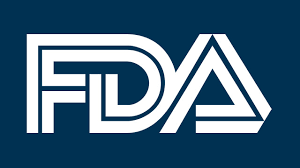With some DSCSA regulations already in effect, and the FDA enforcing the law since May 1, it’s very important to make sure you’re compliant. If you’re unsure about what’s required of you, take a look at our checklist and see if you’re missing anything.
Repeat after me, Checklists are good!
With some DSCSA regulations already in effect, and the FDA enforcing the law since May 1, it’s very important to make sure you’re compliant. If you’re unsure about what’s required of you, take a look at our checklist and see if you’re missing anything.
1. Find a single format to store your T3 documentation.
T3, your Transaction History, Transaction Information and Transaction Statement, must be exchanged every time you purchase or sell on drug product (except at patient level), and that data must be stored for six years from receipt – a regulation that went into effect on July 1st, 2015.
This documentation is not required when moving product within your own organization, but there are many benefits to keeping it all in the same place as your product is stored – not only would it make it easier for any inspections that might come through, but it saves having to later send documentation to staff at another facility.
So given the importance of T3 information, it makes sense that it should be recorded in a single format and potentially be centrally accessible to all the staff in your business so that they can have the responsibility of keeping traceability data updated.
“an estimated $3500 of paper gets used per business every year when printing T3 documents, and there also have to be dedicated staff to file it correctly. As well as that, shipment errors are harder to correct and records difficult to obtain for requests within the 2-day time limit.”
While paper is still a valid and lawful method of storing and sending T3 documentation, it comes with risk and several downsides. Not only does it take up a lot of physical space, it’s also expensive – an estimated $3500 of paper gets used per business every year when printing T3 documents, and there also have to be dedicated staff to file it correctly. As well as that, shipment errors are harder to correct and records difficult to obtain for requests within the 2-day time limit.
Electronic ASNs are your best bet, but of course they come with their own set of problems, being that there are over 200 different formats for ASNs to choose from, and your upstream suppliers are allowed to use any of them without regulation, as the DSCSA has left it up to the industry to regulate themselves.
So you need to make sure that when you receive your documentation for storage that you have a system that can handle compiling any number of ASNs formats into one, as well as converting paper documentation. Your system also needs to be long-term – remember that your T3 documentation must be stored for six years – and it needs to be efficient enough that it can produce any document for an information request at a moment’s notice.

2. Decide with trading partners on the way you exchange info.
All that being said about T3 storage being said, it’s really a good idea to develop your network of trading partners, both up and downstream, and decide on a strategy for exchanging T3 documentation that works for everyone. Rather than trying to manage paper from one supplier and three different ASN formats from another, it’s worth talking to your partners about using one single format to streamline your data exchange processes and prevent headaches on both sides of the supply chain.
Under DSCSA, collaboration between trading partners is more important than ever. New regulations are stringent, and if you’re a dispenser, you have the responsibility to make sure your partners are authorized under DSCSA and licensed at a state or Federal level. This law went into effect on January 1st2015, so you should already be compliant with it.
3. Make sure you can respond quickly to RFIs.
RFIs are requests for information by regulators, i.e. the FDA, and you need to be able to respond to them within a 2 day timeframe. This is why you need a T3 storage system in place that can handle such requests in a short amount of time. Your traceability data needs to be searchable and you need to be able to see its entire lifecycle, because if a request comes through on a certain product – this could happen if it’s been pinged as suspect or illegitimate, if batches of the product need to be recalled from the market, or if someone needs to know where that product was sent – you’ll need to provide the lot number, the expiration date and whether or not you manufactured it.
Your system ideally should have the option for verification in real-time, meaning that your upstream and downstream suppliers can verify information themselves while still giving you the ability to oversee and audit anything that happens within the system.
4. Know what your business does.
Under the new DSCSA regulations, it’s important to know exactly what kind of business you are so you can make sure you’re complying with the regulations set for that business, and they may not be what you think. DSCSA defines a business by what they do, not what they’re technically defined as, so if your organization is operating within a different scope than its definition, you may not be subject to the laws you think you are.
So are you a dispenser – and are you justa dispenser? Dispensers should only be receiving product that they ultimately dispense to patients. Organizations can still be considered dispensers if they hold product in another location before sending it out, but if your business is receiving product and then reselling it to another supplier or organization not owned by your same umbrella company, you’re probably going to be considered a dispenser andwholesaler – which means you’re subject to different regulations under DSCSA.
Wholesalers are subject to inspection by state officials, the FDA, and the NABP (National Association of Boards of Pharmacy), so it’s doubly important that they have an efficient system for retrieving traceability data quickly. It’s also a good idea for wholesalers to be accredited with the VAWD (Verified-Accredited Wholesale Distributors) program. Some people have wondered if DSCSA has made this previously prestigious and necessary program less important, but the NABP has modified some parts of VAWD to enhance its alignment with DSCSA requirements and believes that VAWD is strengthened by DSCSA’s existence. VAWD members have more visibility and control over their distribution operations, so becoming accredited should be seen as a benefit, though it’s important to note that if wholesalers fail to pass inspections, their accreditation can be pulled an in certain states their licenses can be revoked.
5. Keep to global standards.
GS1 ECP Information Services (ECPIS) is the default data exchange program to ensure that across the world, all implemented technology systems and software concerning medical supply chains can communicate with one another and use the information provided.
ECPIS was created by GS1 – a non-profit organization responsible for maintaining the most widely used supply chain system in the world – in response to manufacturers and distributors wanting a singular way to exchange transaction data between global pharmaceutical and medical device supply chains. Today, because of DSCSA, GS1 has released an Implementation Guide that is essential in maintaining compliance with serialization and traceability on a global scale. If you are an international supplier, it is important that you understand and stick to these guidelines to stay both DSCSA and GS1 compliant.




